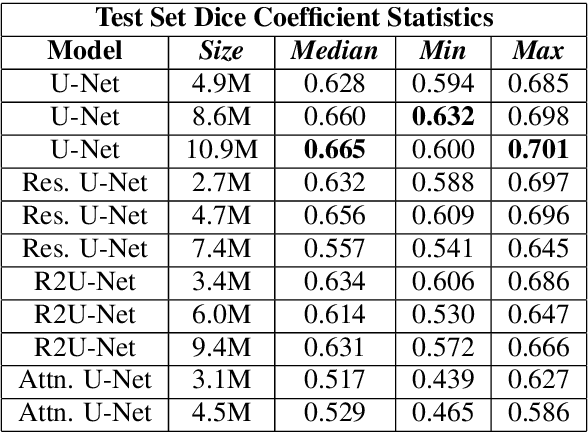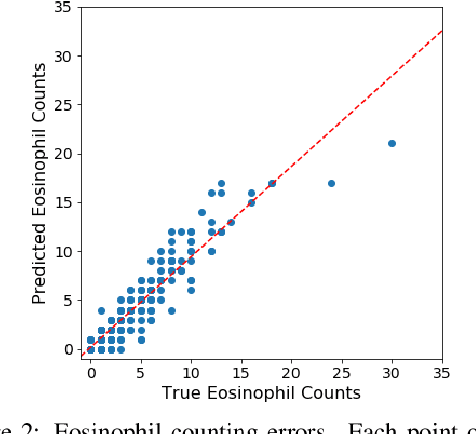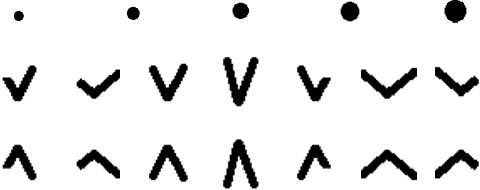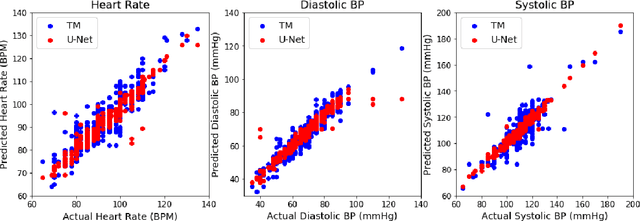William Adorno III
Advancing Eosinophilic Esophagitis Diagnosis and Phenotype Assessment with Deep Learning Computer Vision
Jan 13, 2021



Abstract:Eosinophilic Esophagitis (EoE) is an inflammatory esophageal disease which is increasing in prevalence. The diagnostic gold-standard involves manual review of a patient's biopsy tissue sample by a clinical pathologist for the presence of 15 or greater eosinophils within a single high-power field (400x magnification). Diagnosing EoE can be a cumbersome process with added difficulty for assessing the severity and progression of disease. We propose an automated approach for quantifying eosinophils using deep image segmentation. A U-Net model and post-processing system are applied to generate eosinophil-based statistics that can diagnose EoE as well as describe disease severity and progression. These statistics are captured in biopsies at the initial EoE diagnosis and are then compared with patient metadata: clinical and treatment phenotypes. The goal is to find linkages that could potentially guide treatment plans for new patients at their initial disease diagnosis. A deep image classification model is further applied to discover features other than eosinophils that can be used to diagnose EoE. This is the first study to utilize a deep learning computer vision approach for EoE diagnosis and to provide an automated process for tracking disease severity and progression.
Hand-drawn Symbol Recognition of Surgical Flowsheet Graphs with Deep Image Segmentation
Jun 30, 2020



Abstract:Perioperative data are essential to investigating the causes of adverse surgical outcomes. In some low to middle income countries, these data are computationally inaccessible due to a lack of digitization of surgical flowsheets. In this paper, we present a deep image segmentation approach using a U-Net architecture that can detect hand-drawn symbols on a flowsheet graph. The segmentation mask outputs are post-processed with techniques unique to each symbol to convert into numeric values. The U-Net method can detect, at the appropriate time intervals, the symbols for heart rate and blood pressure with over 99 percent accuracy. Over 95 percent of the predictions fall within an absolute error of five when compared to the actual value. The deep learning model outperformed template matching even with a small size of annotated images available for the training set.
 Add to Chrome
Add to Chrome Add to Firefox
Add to Firefox Add to Edge
Add to Edge